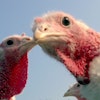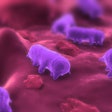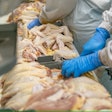
A new form of radio frequency identification (RFID) could improve the accuracy of the technology, making it easier to provide visibility into the poultry supply chain from farm to fork.
Traceability is vital to the poultry industry in the event of a foodborne illness, as well as for monitoring efficiency and regulatory compliance. A growing number of consumers also want to know more about how the food they eat is fed, raised and processed and value the insights traceability provides.
“RAIN RFID gives visibility to individual items. That can help, for example, in food systems with managing urgent issues like recalls,” said Megan Brewster, Impinj VP of Advanced Technology.
In addition, with better traceability, “you can also reduce expiration of perishable goods and enable some of the more complicated inventory techniques, like first in, first out,” she added.
RFID vs RAIN RFID
Both RFID and RAIN RFID use radio waves to locate and identify objects with RFID chips and RFID readers.
UHF RFID chips do not require a dedicated power source, rather the reader powers it. The technology is also able to identify and locate items without line-of-sight, identify up to 1,000 items per second and read items that are up to 10 meters away.
Another major difference is that the data UHF RFID collects is automatically sent to the cloud via the internet of things (IoT). In fact, the word RAIN – an acronym for Radio frequency IdentificatioN – is a nod to the link between RFID and the cloud.
“What we see a lot of times in the food supply chain now is tagging of cases, boxes, pallets and even individual items. That’s kind of the direction that the industry is going in the future,” Brewster explained.


















